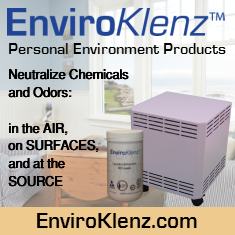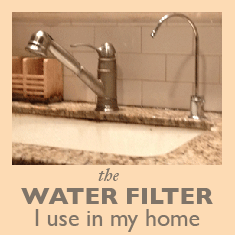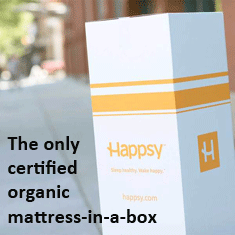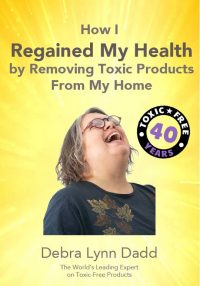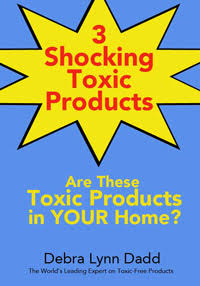
Water | Swimming Pools
Natural Heating Pad History?
Question from west
Hi Debra and the Internet community:
How long have grains been used as a microwavable therapeutic heating pad stuffing?
I’ve never seem to have heard of it before. Is this a recent development or an ‘old’ idea that’s been brought to modern times by reheating via microwaves?
Frankly it surprises me that grains are so good for retaining heat! 
Thank you.
Debra’s Answer
Readers, does anyone know the history of this?
Way to neutralize chlorine in wash water?
Question from Marie
I think we just figured out that my teenager with MCS is very sensitive to the chlorine in our municipal water (used for washing clothes, of course). We are at a temporary location. When we find a place to move to, I planned on getting a whole house filter system which I have not researched yet. (We have been just using Brita for drinking and my son says I have to get something better NOW. I do have a chlorine filter on the shower.) Is there something we can do with the wash water for now?? Please offer any suggestions (Help!!). Thanks!!
Debra’s Answer
If it’s chlorine and not chloramine, you can get any carbon “undersink” filter and install it wherever you can in the pipe that leads to the washing machine. You can buy these filters at any home improvement store.
Birch Sugar
I just want to warn you about a deceptive label I found the other day. Unfortunately, I fell for it and spent $33 to buy what sounded like an interesting new sweetener. Fortunately, they allowed me to return it, even after I had opened the package. The front of the label said in big letters “100% birch sugar.” I know there is birch syrup, which is the boiled down sap of birch trees, which is much like maple syrup. And I know there is maple sugar, which is further boiled down maple syrup to remove the water. And so, I thought this was birch sugar that was the boiled down sap of birch trees. WRONG! On the back of the label, in small letters, it said “Also known as Xylitol…” Well, xylitol is not a sugar at all, it is a sugar alcohol. It never says on the label that it is a sugar alcohol. So read labels carefully, but also educate yourself. Most of what is said on this label is misleading.
Washable wool
Question from 2eyes
I’ve been considering purchasing a washable wool mattress topper. From my research so far, I’ve gotten that wool becomes washable because it is bonded with “a resin” or Teflon. With further digging around, I found that the wool batting that quilters use is bonded with a resin that is typically acrylic. So, I’m not feeling comfortable about the idea of sleeping on washable wool so far. Any thoughts to allay my concerns? Has anyone heard of a relatively benign resin used to make wool washable? Pine resin or something?
Debra’s Answer
I think you should look at each specific wool topper and see what the wool is or isn’t treated with.
I have a couple of wool toppers on my bed. I’ve never washed them. I air them in the sun occasionally. I have wool mattresses and a wool comforter. Again, I’ve never washed them and they are still fresh and comfortable with airing and sunshine.
Mine are from Shepherd’s Dream.
Plastic tooth fillings
Question from Angel
Hi, Debra. Lately I have been reading about plastic fillings leaching chemicals and causing people problems. I have 9 fillings, all plastic done about 8-9 years ago. My teeth used to ache. It was bad for a few years, but has tapered off over time. Now they only ache on rare occasions. Is it worth worrying about them after all these years?
Debra’s Answer
I would ask a holistic dentist for his or her advice. It depends a lot on the type of plastic used.
Lead in tub- Coating advice
Question from Laura
hello,
i have high levels of lead in my tissues, and am going through a slow and natural chelation process. in debra’s book ‘home safe home’ i found out about lead in old tubs.
recently, i bought a lead surface test kit online from pro-lab, and tested my tub. it turned pink, thus, positive for lead.
i love baths, but have been avoiding them since this discovery. i dont really know how much lead is absorbed through skin in water, do you? in your book it seemed to really effect the children in question.
i am a renter, so i think coating the tub with a seal would work. i havent done much research yet, but i wonder if anyone out there has. maybe afm safe-coat has a product.
any advice is appreciated!
Debra’s Answer
If you are detoxing your body for lead, I wouldn’t bathe in a tub that tested positive for lead. Bathtub glazes can contain up to 88% lead.
I don’t know of any sealant. A bathtub liner may work, but is very toxic to install.
Readers? Any suggestions?
Recycling (or disposing of?) Teflon-coated pots and pans
Question from lawrenbc
Hi Debra:
What would you suggest when trying to pass on or dispose of older pots and pans with teflon coating that is flaking off? I have donated these to Goodwill in the past, but I am now concerned with the safety of doing this. I certainly wouldn’t want someone else to be ingesting this teflon coating! Is there a way to recycle this cookware? Or a safe way to dispose of it without contaminating a landfill?
Thanks,
Lawren Coope
Debra’s Answer
Oh good question! I suppose the metal in the pan could be recycled. I’d try asking your local recycling center, or call the manufacturer and see what they say.
New Carpeting Nightmare
Question from Lisa
I am chemically sensitive and live in an old building. Have lived there fine and healthy for a year until they installed new carpeting in the common halls of the building in December (not in my unit, just common halls. All the units have hardwood floors). I know for a fact that formaldehyde in my downfall.
Within two days of the installation I was sick and had to move to a friend’s house. My partner (who is not MCS) did a zeolite treatment, an AFM Safecoat sealer, and two rounds of AFM Lock-out. He did this at night when no one was around.
I returned to the apartment 5 weeks later and could tolerate a few days back in the unit with all my fans going and windows open (in the dead of winter!) I have good days and bad days and it’s not as bad as it was when they first installed. However, I had to leave again this week because I became really sick again.
I’ve moved so many times that I can’t bear to move again. I don’t understand why it’s so bad and the carpet isn’t even in our unit and we’ve sealed all the doors up. No one else in the building has complained.
The very odd thing is that my office had new carpeting installed a year ago and I had no reaction. I also go to meetings in a building with brand new carpet and have no reaction.
Can anyone help me? Would one of those dry steamers help? Any other ideas for getting this thing off-gassed and done with it? I’m desperate. Am getting a carbon mask soon. Am taking magnesium and panothetic acid. Doing saunas to detox. Everything!
Debra’s Answer
Readers?
BPA in baby bottle (not sterilized)
Question from Liv
When I had my baby 5 months ago, I didn’t know about BPA in baby bottles. When I found out about it, I stopped using them and got some BPA Free bottles.
I’ve read that the BPA leaches when heating. So now I wonder, if the baby bottles are not being sterilized, does it mean that the bottles won’t leach BPA so they will be safe for my baby?
Thanks!
Liv
Debra’s Answer
BPA leaches MORE when it is heated, but still leached some when not heated.
Please use baby bottles that you can sterilize.
Food Grade Polyethylene Containers
Question from PLF
We are a tiny manufacture (>50K) of a liquid organic product. Some of our product was stored in high-density polyethylene food grade containers, while another batch was stored in low-density polyethylene, food grade containers.
All the product in in HDP containers was ruined. The product in the LDP is fine. Everything was handled the same way. In as much as we lost 90% of our harvest and value added product, we plan to switch to glass containers. However, I am curious about why this happened and if others have knowledge about food grade plastic containers and leaching. Thank you for any links or ideas.
Debra’s Answer
It was my understanding that food grade plastics don’t leach, but recently there was an article about polypropylene food containers leaching, so we may not know everything we need to know about this.
Readers, do you have any info on this?
Can you tell me more about how your product was ruined by this plastic?

